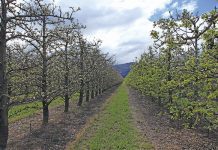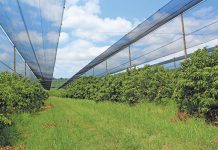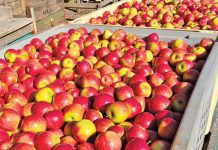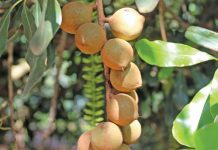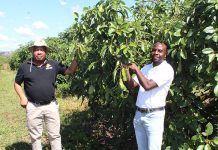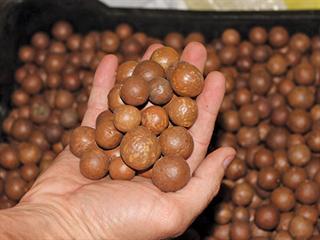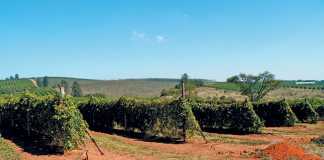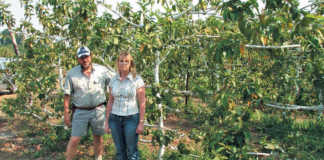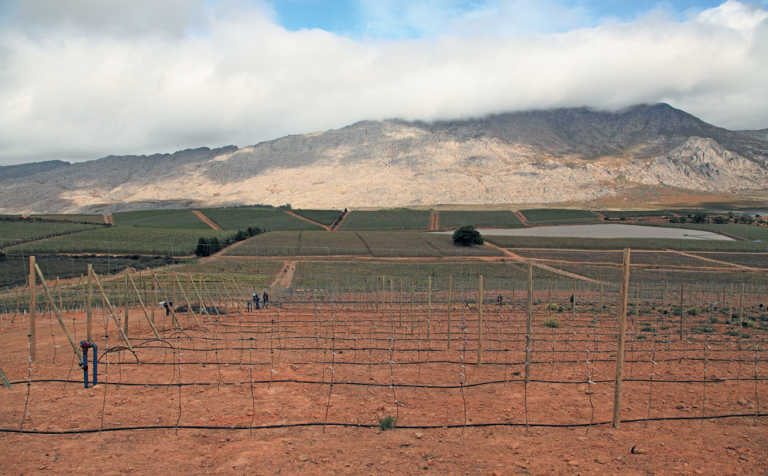
The past two seasons will go down as the most challenging that many pome fruit producers have ever experienced in the Ceres Valley. They had to cope with depleted dams, less than half their annual rainfall, and devastating heatwaves.
Despite this, Retief du Toit, who farms on Bokveldskoof in the Koue Bokkeveld and Lorraine in the Warm Bokkeveld, managed to produce his biggest harvests ever.
READ Learn the basics of growing tea
The long-term production average for each of his farms is around 6 800t/ year, but he produced 7 693t of apples in 2016, and 7 730t during the past season.
Retief, who is a member of the ZZ2 group, acknowledges that he was fortunate enough to
have access to as much water as he uses during a normal year, but said it was far more difficult to maintain optimal soil moisture levels because of the dry conditions.
He ascribes the good yields to sustainable production methods, which include the use of compost, mulching and compost tea, combined with ZZ2’s scientific approach to farming.
“Compost and mulch helped reduce soil evaporation levels, while keeping the soil cool,” explains Retief. “Our farming approach has also resulted in more trees, each with roots growing deeper into the soil in search of nutrients and moisture.” This enables the trees to better withstand extreme conditions.
Retief has been using ZZ2’s Natuurboerdery (nature farming) system since 2001. The change was driven by the company’s concern about the negative impact of inorganic fertilisers and pesticides on soil health.
“We were starting to see it on farms all over – problems developing due to soils becoming depleted of life and farmers requiring more and more inputs to produce the same yields as in the past. We realised this wasn’t a sustainable way to farm, not for the environment, people or from a cost perspective,” says Retief.
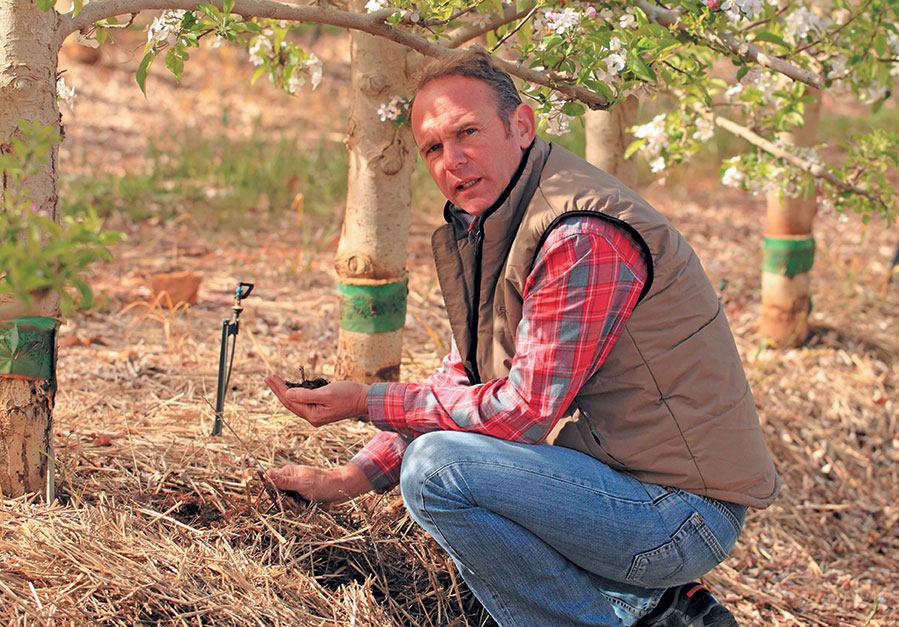
Converting to more sustainable production practices was easier said than done, however. Little of the international literature available applied to conditions in South Africa.
“We measured everything we did,” explains Retief. “Changes were based on trial and error, with our observations being used to refine treatments.”
This scientific approach has allowed ZZ2 to maintain commercially viable yields.
“People always associate organic or biological production methods with a drop in production volumes and quality, but we’ve managed to maintain production volumes above the industry average.”
On his farms, the four-year average for the Golden Delicious cultivar is 113t/ha while for Royal Gala it is 81t/ha.
Since the switch, inorganic fertiliser is only used occasionally, while the use of red band pesticides have been completely stopped.
Maintaining the nematode balance
These environmentally friendly production practices have resulted in more balanced biota, in which beneficial organisms help keep potentially harmful organisms in check.
“Soil analyses have confirmed that beneficial nematodes are keeping parasitic ones in check. We also do not have any problems with woolly aphids, thanks to the healthy production environment,” Retief says.
Phosphate levels are analysed and corrected with superphosphates before new orchards are established. Soil pH, which tends to be a little acidic, is corrected to 5,5 KCL before planting.
“It’s important to start a new tree on a good base, as the first two years have a critical impact on future production,” explains Retief.
READ Get the best out of kraal manure
“Rectifying problems after trees have been planted is much more difficult and expensive than doing things correctly from the start.”
Since the nitrogen content of the compost used is only 1,2%, urea is applied in orchards where nitrogen shortages occur, usually in September or October. Volumes are generally low, however, and hardly ever exceed 60kg/ha.
Leaves are analysed in each orchard every January to identify macro- and micro-nutrient shortages. Shortages are corrected by foliar sprays and/or soil applications. “But this is seldom necessary,” Retief adds.
Compost is spread onto plant rows in the second year after planting, and then every year thereafter, usually in autumn and as soon as possible after harvesting.
About 20 m³/ ha is applied, which works out to roughly R320/ m³. This is similar to the cost of applying a chemical fertiliser.
Organic vs inorganic
“Whether the use of compost works out more expensive or cheaper than inorganic fertiliser really depends on the system used on a farm,” notes Retief.
“It can be less than half the cost of fertigation, while it might work out slightly more expensive than simply broadcasting fertiliser.”
READ Organic farming: a commercial farmer converts
This said, using compost might help buffer farmers against rising chemical fertiliser costs, as these are linked to the exchange rate.
“Fertilisers are bound to get more expensive in future, especially now that South Africa has been downgraded by the ratings agencies,” says Retief. “Remember though, that our reason for using compost was not to save costs, but to farm more sustainably.”
Since economies of scale can reduce the cost of compost production, ZZ2 was instrumental in establishing Lumbri Compost in Ceres in 2006.
“People often try to take shortcuts by producing their own compost,” says Retief.
“But producing good quality compost is a science and we don’t have the time, space or reserves to produce sufficient volumes for the more than 140ha of apple trees we have under production. In addition, there are many environmental regulations to comply with when producing compost on your farm.”
Fruit-specific compost
Lumbri Compost produces a high quality, standardised product. It has a higher fungi than bacteria component, as it is formulated specifically for fruit tree production. (With vegetables, the ratio would be reversed.)
A caveat is that nutrients from compost take longer to become available to plants than those from chemical fertiliser. “We work on a mineralisation rate of about 30% per year, which means that only 30% of the nutrients in the compost become available to plants each year,” says Retief.
The compost is covered with straw immediately after application; between 350 bales and 400 bales are used per hectare. The straw serves as mulch and helps keep the compost moist.
“Moisture levels must be maintained at around 20%, otherwise the microbes responsible for breaking down the compost become less active, and the compost takes longer to decompose,” says Retief.
The straw also serves as a food source for beneficial soil organisms and protects microbes from the sun.
All of this helped during the extreme climatic conditions experienced during the past two seasons, as well as the heatwave in February. Compost teas are made in aerated tanks on the farms and sprayed onto orchards in early spring.
This helps to activate microbes in the compost and accelerates the decomposition process.
Healthy soil
The compost completely changes the soil’s overall composition, health and nutrient status as new additions are made each year, says Retief.
The carbon content of one of his Royal Gala orchards, for example, has more than doubled from 1,9% in 2003 to 4% in 2015.
According to Retief, it is difficult to quantify the water and financial savings achieved through Natuurboerdery (nature farming), as there are too many variables to consider.
But, he continues, “we’ve managed to increase production volumes and the quality of our fruit, which to me means we’re using our soil and water more efficiently.”
Email Retief du Toit at [email protected].


